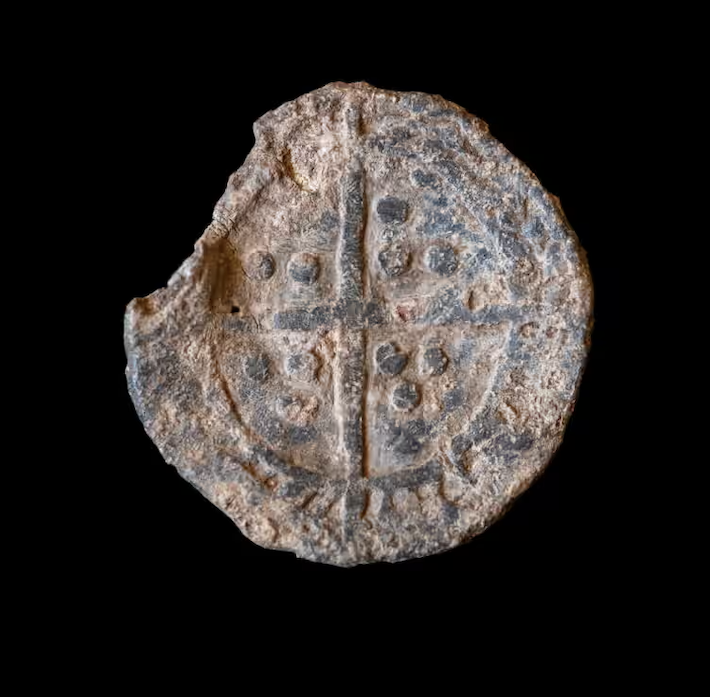 NORFOLK, ENGLAND—The Guardian reports that a coin-like piece of lead was recovered by a metal detectorist near Oxburgh Hall, a moated country house in the East of England. Dated to between A.D. 1470 and 1560, the token is thought to have come from Bury St. Edmunds Abbey in Suffolk. One side of the coin bears a long cross. The other side is very corroded, but probably showed a bishop’s head. Such tokens were sometimes handed out to poor people at Christmastime by a choirboy acting as a “boy bishop” in a parody of Christian services, processions, and collecting money. The tokens could be exchanged for food between St. Nicholas Day, on December 6, and Holy Innocents Day, on December 28. “Although tokens could be spent in the local town they may also have been kept as keepsakes, but the one we have found could also simply have been dropped and lost,” said archaeologist Angus Wainwright of England’s National Trust. He thinks a local villager may have traveled the 27 miles to the Abbey Church in Suffok to partake in holiday festivities. “This discovery shows how rich the cultural life of even the poorest folk could be in the middle ages,” he said. To read about coins of William the Conqueror that were issued after his Christmas Day coronation, go to "Norman Conquest Coin Hoard," one of ARCHAEOLOGY's Top 10 Discoveries of 2019.
NORFOLK, ENGLAND—The Guardian reports that a coin-like piece of lead was recovered by a metal detectorist near Oxburgh Hall, a moated country house in the East of England. Dated to between A.D. 1470 and 1560, the token is thought to have come from Bury St. Edmunds Abbey in Suffolk. One side of the coin bears a long cross. The other side is very corroded, but probably showed a bishop’s head. Such tokens were sometimes handed out to poor people at Christmastime by a choirboy acting as a “boy bishop” in a parody of Christian services, processions, and collecting money. The tokens could be exchanged for food between St. Nicholas Day, on December 6, and Holy Innocents Day, on December 28. “Although tokens could be spent in the local town they may also have been kept as keepsakes, but the one we have found could also simply have been dropped and lost,” said archaeologist Angus Wainwright of England’s National Trust. He thinks a local villager may have traveled the 27 miles to the Abbey Church in Suffok to partake in holiday festivities. “This discovery shows how rich the cultural life of even the poorest folk could be in the middle ages,” he said. To read about coins of William the Conqueror that were issued after his Christmas Day coronation, go to "Norman Conquest Coin Hoard," one of ARCHAEOLOGY's Top 10 Discoveries of 2019.
Medieval Lead Token Recovered at England’s Oxburgh Hall
